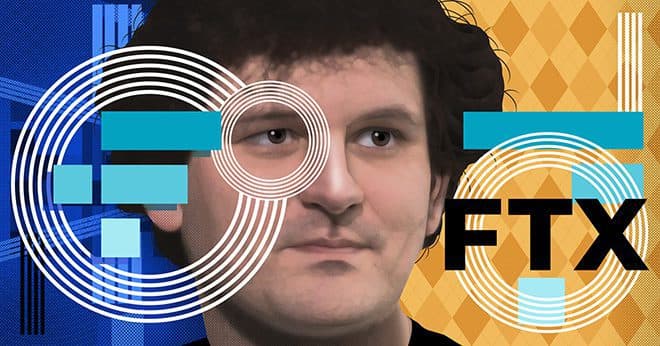FTX’s Bankman-Fried: Financial Institutions Have ‘Mandate’ to Invest in Digital Assets
New capital will help close the gap between total crypto market capitalization and fiat invested to date which Bankman-Fried pegs at five to one.

Sam Bankman-Fried; Blockworks Exclusive Art by Axel Rangel
- Bankman-Fried thinks it’s no longer a question of if, but when, although the bulk of the anticipated capital inflow is still six to 24 months away
- FTX US completed the acquisition of LedgerX on Monday, as it seeks to expand into regulated futures and options offerings
The institutions are coming. We’ve all heard the frequent refrain from digital asset industry participants. But what does that mean in more concrete terms? FTX founder Sam Bankman-Fried believes that big financial institutions are not just curious about digital assets, they have “a mandate” to invest.
In a recent podcast with Patrick O’Shaughnessy, Bankman-Fried estimated the total fiat currency inflow into all digital assets is between $400 billion to $500 billion, or less than 20% of crypto’s current $2.75 trillion market cap. He reaches that figure by adding the sum total of stablecoins ($135 billion), US dollars sitting on exchanges ($100 billion), and various other sources “that aren’t going to be as easily tracked,” such as OTC purchases.
What is going to change that ratio, O’Shaughnessy asked? Substantial capital flows into the digital asset space over the next few years, explained Bankman-Fried.
“Everyone knows that most financial institutions are planning to buy bitcoin at some point,” he said. “If you talk to basically any big bank, pension fund…they’ll all say the same thing, which is, yes, we have a mandate — not just a green light, but a mandate — to get involved in the crypto ecosystem. They will also all say, ‘but we’re not ready yet’.”
That sentiment resonates with Michael Moro, CEO of Genesis Trading, who told Blockworks that the idea of institutions merely open to the prospect of being involved in crypto, leaves them “running the risk of becoming irrelevant/obsolete.” He added, “I think this view was acceptable, if not exciting, in 2017 or 2018. Not in 2021.”
The mandate, Bankman-Fried told Blockworks in an email, “Comes from a variety of stakeholders, likely originated from the LPs, investors [and] customers but flowing through management.”
Moro agrees, noting, “If the institutions don’t respond to the investors, then the investors will move funds to institutions who will.”
Bankman-Fried on going beyond spot trading
FTX US finalized its acquisition of derivatives exchange LedgerX today, a deal that was announced in August. As part of the deal, the exchange will be rebranded to FTX US Derivatives, according to a press release. Post-acquisition, FTX US gains a CFTC-regulated Designated Contract Market (DCM), Swap Execution Facility (SEF) and Derivatives Clearing Organization (DCO).
In press statements, both Zach Dexter, CEO of FTX US, and Brett Harrison, President of FTX US, emphasized the firm’s interest in cooperating with regulators as instrumental to the deal. “We believe the integration of the two organizations provides us with not only a technological advantage, but also furthers our working relationship with the regulatory community in a positive, constructive and transparent manner,” Harrison said in the statement.
Bankman-Fried had turned his attention to the subject of compliance as well. In fact, on O’Shaughnessy’s Invest Like the Best podcast said, “Right now, if you’re a crypto company and you’re not thinking extremely hard about regulation and compliance, you’re making a mistake. I don’t think it was as obvious a year ago.”
When O’Shaughnessy inquired as to Bankman-Fried’s view on important differentiators between competing derivatives exchanges to attract customers, Bankman-Fried said that a key feature missing from US derivatives markets is cross-margining.
For example, on FTX (international) investors can use any equity collateral to gain margin leverage, which is not the case on LedgerX today. This is one reason why crypto derivatives volumes are just one-tenth of spot volumes in the United States, compared to globally where derivatives are nearly two and a half times the spot volumes.
That’s a gap Bankman-Fried hopes to reverse with FTX’s new CFTC-licensed derivatives platform.
But, there’s another competitive edge which he actually called out first: “Dank memes on Twitter.”
A prolific Twitter personality in his own right, Bankman-Fried recently raised $420.69 million in venture capital but will have to navigate a US regulatory landscape dotted with government agencies that have sometimes shown themselves to be nonplussed by memes.






